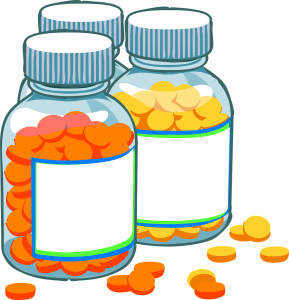
SICKLE CELL AND HYDROXYUREA
What is hydroxyurea?
Hydroxyurea is a medicine that can help children and adults with sickle cell disease. Research studies show that hydroxyurea lowers the following:
• The numbers of acute chest syndrome (pneumonia) events
• The number of pain crises
• The need for blood transfusions
• The number of trips to the hospital
Hydroxyurea also might prevent damage to the spleen, kidneys, lungs, and brain.
Hydroxyurea is given by mouth one (1) time each day. It comes in liquid or capsule form. The U.S. Food and Drug Administration (FDA) has approved it for the treatment of adults with severe sickle cell disease.
Which children should take hydroxyurea?
We consider hydroxyurea for children with sickle cell disease who have had:
• Many painful events,
• Several cases of acute chest syndrome (pneumonia),
• Severe anemia, or
• Other special problems with their internal organs.
How does hydroxyurea work?
Red blood cells contain hemoglobin. Hemoglobin helps red blood cells carry oxygen from the lungs to other parts of the body. People with normal hemoglobin have mostly Hemoglobin A in their red blood cells. People with sickle cell disease have mostly sickle or Hemoglobin S (Hb S) in their red blood cells. Hb S is an abnormal type of hemoglobin. In people with sickle cell disease, Hb S causes the red blood cells to change from a round shape to a sickle or banana shape. Also, Hb S causes the red blood cells to become rigid and sticky. This leads to blockage of blood fl ow to important body organs, muscles, and tissues.
Hydroxyurea treatment helps the red blood cells stay round and fl exible. This lets them travel more easily through tiny blood vessels. In part, this happens because hydroxyurea increases the amount of fetal hemoglobin (Hb F) in red blood cells. Newborn babies have Hb F when they are born. Hb F helps protect them from sickle cell complications (health problems) during the fi rst few months of life. With an increased amount of Hb F, red blood cells are less likely to change into the sickle or banana shape. In most people, the amount of Hb F decreases after the fi rst few months of life. Some people have more Hb F than others. People with sickle cell disease who have higher levels of Hb F usually have fewer complications of the disease.
Is hydroxyurea a cure for sickle cell disease?
No. Hydroxyurea does not cure sickle cell disease. Hydroxyurea can greatly reduce some of the complications of the disease. It does not work if it is not taken as instructed. Usually, it takes several months before you will see results or get any benefi t from the medicine. It takes that long to reach the right dose of hydroxyurea. It is important to remember that hydroxyurea must be taken every day for it to work well.
Is hydroxyurea safe?
Hydroxyurea was first used as a treatment for cancer. It is a powerful medicine. But hydroxyurea is given at a much lower dose to children with sickle cell disease. No serious side effects have been seen in children with sickle cell disease. It does not cause hair loss, vomiting, weakness, or loss of appetite. Many children with sickle cell disease have taken hydroxyurea for several years without problems. Hydroxyurea is very safe when given by medical specialists experienced in caring for patients with sickle cell disease.
In children with sickle cell disease it takes several months to reach the full dose of hydroxyurea. At full dose, the medicine should slightly reduce the number of blood cells in the body. One type of blood cell that can be reduced is a white blood cell called a neutrophil. Neutrophils help fight infection in the body. For this reason, monthly blood tests are needed to check the blood counts. If the white blood cells are low, the dose of hydroxyurea will be decreased. The side effects of taking hydroxyurea for a long time are not completely known. In the past, there has been concern about a possible cancer risk while taking hydroxyurea. But, an increased risk of cancer has not been found in children and adults with sickle cell disease. Some of these patients have been treated with hydroxyurea for as long as 15 years. The risk of cancer appears to be no different for people who have sickle cell disease and are taking hydroxyurea than for those who are not taking hydroxyurea.
What tests are done to monitor hydroxyurea treatment?
Patients taking hydroxyurea usually have physical exams and have their blood counts checked every month. They will be seen more often if needed. If your child is part of a research study, then more tests may be performed. These tests help to determine the long-term risks and benefi ts of hydroxyurea for people with sickle cell disease. Areas of the body tested can include the blood, brain, kidneys, heart, and other internal organs.
www.stjude.org








Needful! Do you run clinc or any assistance to sicle cell children?Many thanks.
Hi Toye,
No, I do not run a clinic, as I am not a doctor. This is what I do, write a blog about SCD for parents and other people who have it to know about what is out there and how they can help themselves or loved ones. Do keep checking my blog out. If I ever do an even, I will let you know. Take good care.
Is it available in Nigeria or just in the United States?
Hello Niyi,
Thanks for your question; I know it can be prescribed in US, UK and EU. I believe it is available in Nigeria but ask your heamotology doctor or consultant for confirmation on this.
Hydroxyurea has helped my daughter alot. In actual fact I take her for blood count and HB fraction test every 3 months. Also we go for TCD(Tran scanal dropper) text every 6 months to check for stroke in SCD.
Hello Dorothy,
Many thanks for reading and letting me/us know that Hydroxyurea has helped your daughter a lot.
I wish her and you well.